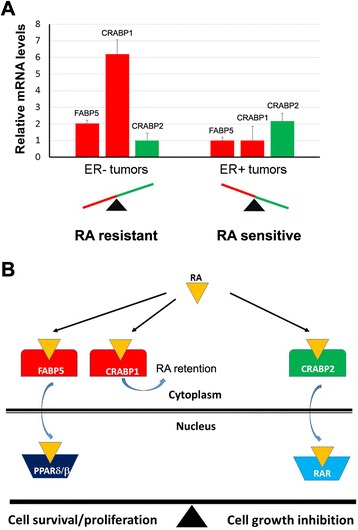Fig. 6.

Schematic representation of the effects of different RA binding proteins on modulation of RA action in breast cancer. a Relative mRNA levels of FABP5, CRABP1 and CRABP2 in ER-negative (n = 64) and ER-positive (n = 112) primary breast cancer tissue samples. The mRNA levels for each gene were determined based on the normalized signal intensity of the gene microarray data and are shown relative to CRABP2 (set as 1) in the case of ER-negative tumors and FABP5 (set as 1) in the case of ER-positive tumors. These data provide insight as to the possible underlying cause of RA resistance in ER-negative tumors. b A schematic model illustrating the distinct roles of CRABP1, CRABP2 and FABP5 in modulating cellular response to RA in breast cancer cells. FABP5 channels RA to PPARδ/β, a nuclear receptor which promotes cell proliferation. CRABP1 sequesters RA in the cytoplasm. CRABP2 delivers RA to RAR, leading to cell growth inhibition. The balance between FABP5/CRABP1 and CRABP2 expression levels determines the cellular response to RA (cell growth promotion or inhibition)
